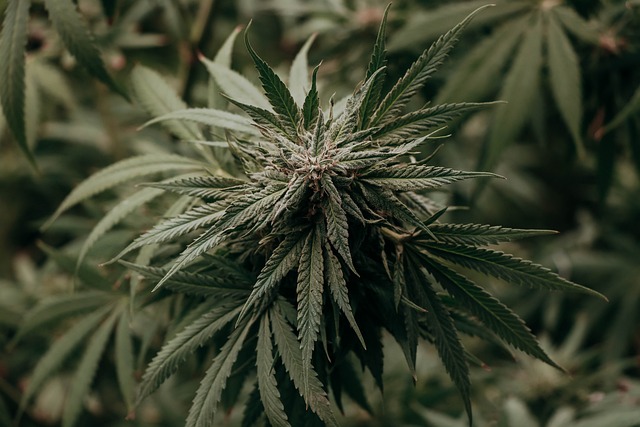Elementary nomenclature of the essential principles of marijuana seeds and cannabis genetics
Cannabis Genetics. When buying cannabis seeds, the novel grower may feel insecure because of the nomenclature that often accompanies the names of different varieties. It is important to know some concepts for a correct choice of the plant we want to grow. As we will see, there is a big difference between acquiring a second generation subsidiary (F2) or an IBL, although in both cases they are seeds of the same variety.
Pure cannabis genetics
Pure cannabis genetics are called landraces or purebreeds. These pure genetics are the cornerstone of modern genetics. In reality it is increasingly difficult to find pure original genetics since the race of seed banks to obtain new hybrids during the last decades has made these landraces have disappeared in many of their places of origin; such as in Morocco.
Fortunately there are landraces spread all over the world, especially in countries far from mass tourism where breeders have not yet arrived. All landraces belong to one of the 3 cannabis families: Cannabis Sativa, Indica or Ruderalis.
Each variety shows its genes (genotype) adopting certain growth and flowering patterns (phenotypes). The pure varieties that still retain their most original genotype have a great homogeneity and in similar cultivation conditions, all the seeds will give very similar plants to each other (phenotypes) .When we acquire pure varieties and grow the seeds in the same environment, we will obtain homogeneous plants with very similar growth and flowering patterns and very similar organoleptic and psychoactive qualities among them.
IBL or Stabilized cannabis hybrids
The acronym IBL comes from the English inbred line, which means that plants with a virtually identical genotype (inbreeding) have been crossed. The opposite of inbreeding is outbreeding, which refers to the introduction of new genes in the variety. It is a method used by geneticists to fix the best features of a particular variety without using any other variety, thus stabilizing the line with which one works, be it a hybrid or a landrace.
In cannabis genetics, a variety is considered to be IBL when it is only crossed with itself, highly stabilized and the vast majority of individuals show similar traits.
There is a lot of work behind an IBL of this type, because for its development it was necessary to use a large number of pure copies for the selection of parents and achieve the best results. The breeder faces the inbreeding depression that most species suffer when they cross parental with very similar genetic information. What we have here are varieties with a relatively closed genetic spectrum, which do not show large differences in their traits.
When two pure landraces or IBL plants are crossed, with other genotypes with different characteristics, what is called the F1 hybrid is obtained, that is, the first filial generation of the cross between a specific phenotype (Parental # 1) of genotype A with another phenotype Genotype B (Parental # 2). The normal thing in this type of crosses is to obtain a relatively uniform offspring, provided that the varieties used as parental are stable. If the crossing is made from pure races or IBL, the offspring (F1 hybrid) will have the so-called hybrid vigor or heterosis (quite the opposite of inbreeding and by which better specimens are normally obtained). In short, the first subsidiary generation of any crossing is called F1, and this first generation will be called F1 hybrid when the parents are pure races or IBL.
When we cross individuals of the F1 generation with each other (whether they are pure, hybrid or polyhybrid varieties) we obtain the second filial generation or F2, and so on. It is normal for the second generation F2 subsidiary to produce a more heterogeneous offspring than the first. It is normal to obtain 25% of plants similar to the mother, 25% similar to the father and 50% that provide a more or less balanced mixture of both parents, so stabilization work must continue generation after generation (F3, F4, F5 …) until you find the one that gives a stable, homogeneous offspring with the qualities you are looking for.
At present, most of the seeds available are polyhybrid, that is, crosses between different hybrids. The offspring of this type of crossings is often quite heterogeneous, producing specimens with notable differences between them. The genetic spectrum of these plants is very varied, so you cannot expect them to be as homogenous as that of a classic F1 hybrid. It is easy to understand the difficulty and complexity involved in stabilizing such a cross, since the mixture of the different genetic traits from the different varieties used to form the cross genotype makes the selection and stabilization of those traits e want to keep a very complicated task. The vast majority of hybrids in the market are in fact polyhybrids, plants created from two hybrids, and too many times homogeneity and stability is a pending subject.
Backcross (BX)
The backcross or backcross is a technique used by breeders to set certain characteristics of one of the parents used to make the crossing. For this, a copy of the offspring of the crossing is chosen (it can come from any generation, F1, F2, etc.) and it is crossed with the original parental of which it is desired to obtain the characteristics, also called recurrent parental. In this way, specific characteristics of the original parental are established by crossing with their own offspring. If we want to achieve an offspring even more similar to the parental we have chosen, we can cross again the BX1 generation with that parental (which will result in the BX2 or squaring), and even repeat the operation for the third time (BX3 or cubing) or times needed (BX4, BX5, etc).
This technique is frequently used to replicate clones (of which there are no males) in the form of seeds. To do this, we choose a donor parent (male) that allows the desired characteristics of the female clone to be expressed in their offspring, and repeating the backcrosses as many times as necessary to achieve the desired objective, which is that a offspring provide us with the largest possible number of the desirable characteristics of the original mother to whom one wishes to replicate.
S1 feminized
S1 is the acronym with which we call the first generation of a branch of a female plant by itself. This is achieved by various techniques and the result – if done correctly, they are seeds very similar to the female that you want to replicate, besides being always female. Thus, the sex of a clone of this female (or a branch thereof) is reversed and the pollen produced is used to pollinate it.
As always in genetics, the more stable the replicated female is, the more stable the results will also be. This technique can be used for the same purpose as conventional backcrossing with female and male plants, selecting and setting characteristics but starting from a single parent in the first step, that is, to produce the first generation. Thus, we can find seeds S2, S3, etc, or backcrosses made from generation S1, S2, etc., again with the original female plant.

